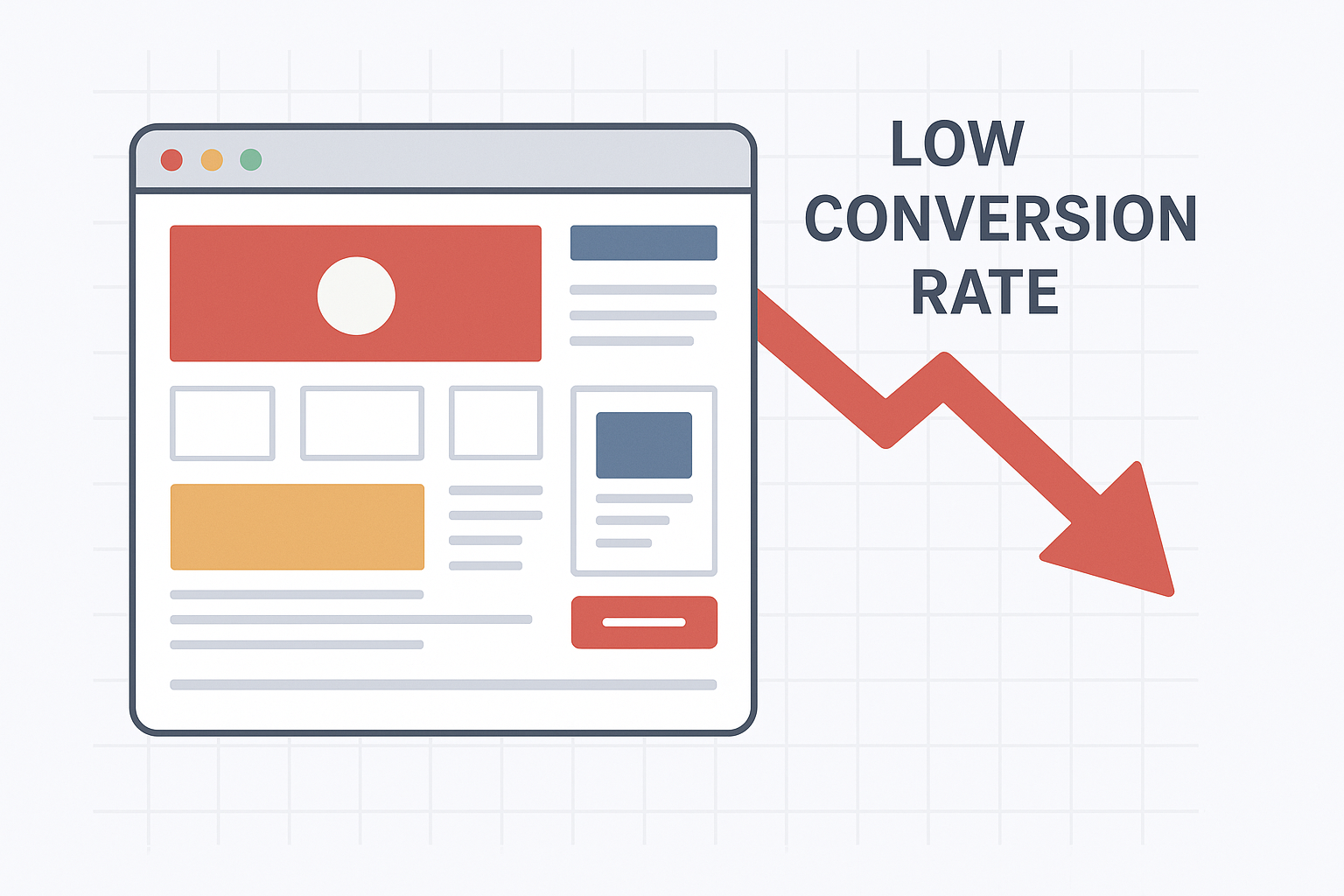
Introduction
In today's digital world, having an attractive and functional website is crucial for any business. However, many designers make mistakes that can directly affect a website's conversion and sales. From poor navigation structure to poor user experience (UX), mistakes in web design can cause users to abandon the site before completing a purchase or taking an important action.
In this article, we address some of the most serious mistakes that affect the conversion of a website and how to avoid them to improve the effectiveness of your page and, therefore, your sales results. In addition, if you want to learn more about how to improve your sales strategies through content, we invite you to read our blog Copywriting techniques to sellwhere we share tips for creating persuasive copy that converts.
Table of Contents
Confusing and complex navigation
One of the biggest web design mistakes is having a confusing or overly complex navigation structure. If users cannot find what they are looking for quickly, they will abandon the site and look for easier to navigate options.
How to avoid it:
Use clear and simple menus.
Group the elements in a logical way.
Make sure that important links are easily accessible from all pages.
Not very responsive design
With an increasing number of users accessing websites from mobile devices, having a design that is not responsive (adaptable to all screen sizes) is a serious mistake. A site that does not look good on mobile devices can cause frustration and, ultimately, loss of conversions.
How to avoid it:
Make sure your website is designed with a responsive approach.
Test your site on different devices and screen sizes to ensure a smooth user experience.
.
Slow loading speed
Loading speed is a critical factor in website conversion. If your page takes too long to load, users will become impatient and will probably abandon before it loads completely.
How to avoid it:
Optimizes images and other heavy elements.
Use a content delivery network (CDN) to speed up loading time.
Review and remove unnecessary scripts that slow down the site.
Unclear or non-existent calls to action
Calls to action (CTAs) are essential to guide users to conversion, whether it's a purchase, a subscription or an inquiry. If your CTAs are unclear or poorly placed, users won't know what to do next.
How to avoid it:
Use eye-catching and clear CTA buttons.
Place the buttons in strategic locations throughout the site.
Make sure your call-to-action texts are specific and action-oriented, such as "Buy now" or "Request a consultation".
Cluttered or excessive content
A cluttered or text-heavy web page design can overwhelm users and make them feel lost. Users prefer websites that are easy to scan, where they can get the information they are looking for quickly.
How to avoid it:
Organize the content in clear and well-defined sections.
Use headings, lists and short paragraphs to facilitate reading.
Include images and other visual elements that complement the content.
Lack of testing and analysis
Failing to constantly test and analyze the performance of your website is another common mistake. A/B testing and data analysis are essential to understand how users interact with your site and what changes could improve conversion.
How to avoid it:
Perform regular A/B testing on key elements of your site (such as CTAs, contact forms and product pages).
Use analytics tools such as Google Analytics to understand user behavior and make continuous improvements.
Do you need help to improve your website conversion? Contact us and find out how we can help you design a more effective and profitable website.
Conclusion
Web design plays a crucial role in the conversion of a site and, therefore, in the success of an online business. Avoiding the above mistakes can make a big difference in the user experience and, ultimately, in sales. Take the time to optimize every aspect of your website, test regularly and always keep the focus on usability and clarity.









